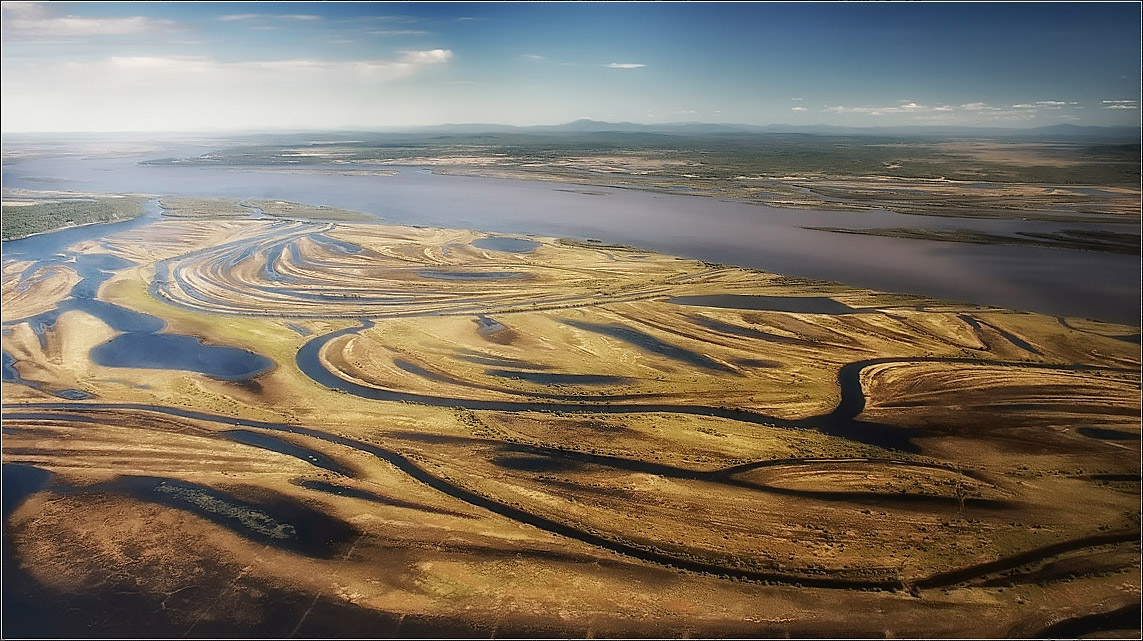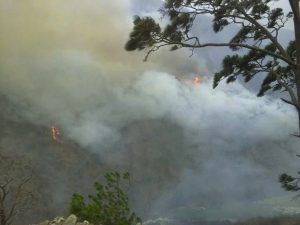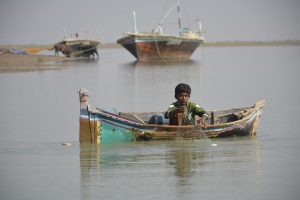Russia’s Far East is supposedly a strategically important area for President Vladimir Putin's administration, with the government repeatedly declaring that development of the remote territory is one of its top priorities. But, as any Russian expert will tell you, many governments have made such claims over the decades, and yet nothing much has actually happened. Despite its vast natural resources, the region continues to stagnate.
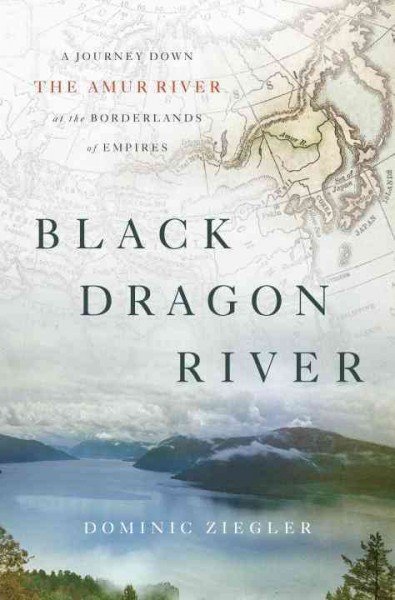 This may be changing. A new book, Black Dragon River, looks at the great Amur basin, which forms a large part of the border between Russia and China. Written by the Economist's Asia editor Dominic Ziegler, the book frames the region as central to Putin's plan for Russia's future, a future that sees increasing trade between Russia and Asia – especially China – as Russia draws away from Europe.
This may be changing. A new book, Black Dragon River, looks at the great Amur basin, which forms a large part of the border between Russia and China. Written by the Economist's Asia editor Dominic Ziegler, the book frames the region as central to Putin's plan for Russia's future, a future that sees increasing trade between Russia and Asia – especially China – as Russia draws away from Europe.
One of the ways to do so would be to exploit the regions along which the Amur flows, one of Asia’s mightiest rivers. This includes an amazing range of ecoregions: from tundra to boreal taiga forests, to steppe grasslands, deciduous temperate forest and wetlands. China may be the ideal partner for Russia in exploiting the region’s natural resources – not that they are not already being exploited. The varied regions are also facing varied threats from logging, mining and hydropower.
There is only one problem. The area has been, and could well again become, contested territory between Russia and China.
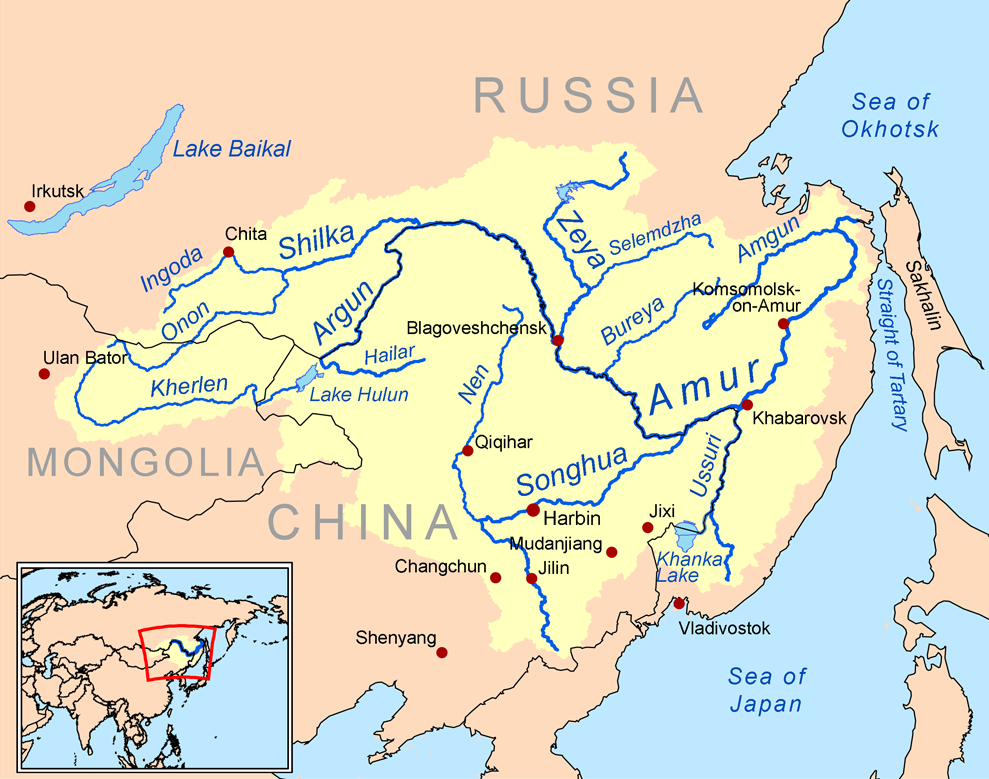
Source: Wikimedia
"Apparently forgiven and forgotten (for now) . . . is a gargantuan Russian grab of territory from China the scale of which dwarfs all the better remembered Western depredations in the Victorian period – Hong Kong, Shanghai and the other Treaty Ports," Ziegler says in the book's prologue.
The Russian campaign of 1854 took from China an area about the size of France and Germany combined, all without firing a shot, a situation the author compares to Russia's recent annexation of Crimea from Ukraine. "If Russia can tear up agreements and treaties to grab Crimea, what kind of example does that set for an increasingly assertive China that might one day awake to feel longings for its former lands beyond the Amur?" the author writes.
Ziegler explores the Far East territory where it meets with the Amur River on the Russian-Chinese border, visiting both its wild and its more developed areas. He sets out the case, through historical accounts and lived experiences, why heavily-populated China may long for this area, and how the lighty-populated Russian area may be vulnerable.
Peace through conservation
In poignant prose, the author conveys the wildness of the territory around the river itself. Entirely lacking dams along its main trunk, the Amur is one of the few rivers to still run free. The reign of peace among nations at the borderland has been aided by efforts to maintain the region’s biological diversity, especially in Dauria, or Transbaikal, the mountainous region beyond Lake Baikal, according to the author.
"Conservationists understand the importance of preventing Dauria from being carved up, fenced, drained, and domesticated. The work of a handful of Russians, Mongolians, and Chinese in keeping the place wild has helped lower the frontier antagonisms among the three big countries," Zeigler writes.
This may not last. According to joint research released in 2015 by WWF and the Russian companies EN+ Group and EuroSibEnergo, Chinese, Mongolian and Russian companies are developing plans to dam the Amur and its tributaries at potentially dozens of points. WWF and the Russian companies EN+ Group and EuroSibEnergo are working together to develop environmental standards and assessments to lessen the environmental impacts of planned hydropower projects, many of which are certain to move forward given the enormous potential for power production in the Amur basin.
Zeigler testifies to the inspiring state of the natural areas in the Amur basin throughout the book, including cranes and millions of other birds using seasonal wetlands as a stopover along the East Asia-Australasian Flyway; 2 billion acres of boreal forests of larch and pine; critically endangered Amur kaluga sturgeon; and thick runs of five million salmon. The author's describes the, “wild redemptive places that the Amur basin promised thanks to both its scale and to its biological diversity, which is extraordinary.”
This wilderness is threatened by human encroachment, as the drive to extract the region's forests and mineral resources intensifies amid difficult economic times in Russia. Development of tourism is also a focus, with Russian wilderness protection laws allowing development of tourism and related infrastructure inside protected areas. On the Chinese side of the basin, the population has doubled over the last three decades.
Zeigler reports the existence of Chinese sturgeon hatcheries, where wild female kaluga are captured, fed with hormones to induce reproduction and stripped of their roe. The hatchlings are raised until they are big enough to sell to restaurants. These hatcheries are currently the biggest threat to the critically endangered species, according to the author. The fish also face threats from poaching, of course, as kaluga caviar is part of a "criminal conveyor belt" of goods coming out of Russia to China via the region's only high quality road, with drugs coming back the other way.
Russia’s timber exports to China are growing by 18 million cubic metres per year, though much of the trade is illegal and total numbers are only estimates. "The impact on fragile ecosystems is profound, and not only from the forests' fragmentation," Zeigler says, noting the negative impact on the Amur tiger, of which only about 500 remain.
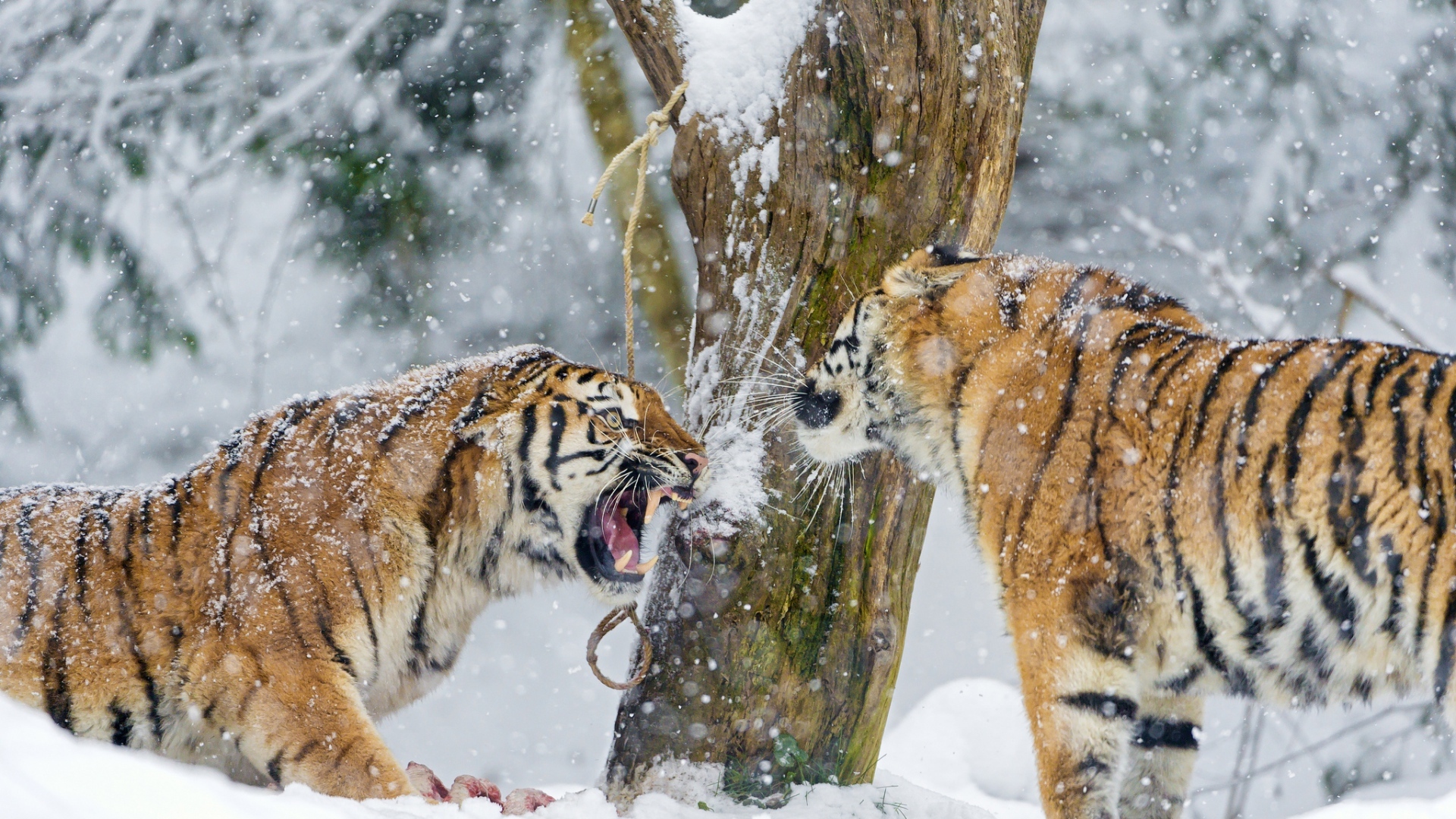
The Amur tiger (Photo from picsfab.com)
Meandering history
For the better part of the text, the author details the history of Russians settling in the Far East in hopes that the lush Amur River would be a new America. He recounts the stories of key historical figures and the methods of subjugating the native populations, accepting sable pelts as a form of tax payment. The more recent history of the use of the territory as a distant work camp for those sent to the gulag is also covered in detail.
The book meanders not only along the Amur River today but also through Russian history, weaving impressions of the contemporary journey in the Far East with tales of the Russian aristocracy from the founding of St. Petersburg to revolutionary rebellion, stories familiar to every Russian or foreign student of Russian history or language.
China perspective?
A major shortcoming of the book is its focus on the Russian side of the Amur, despite the book title's use of the Chinese name for the river and the fact that the majority of the population in the Amur basin is Chinese.
The book begins with an interesting account of the author's trek to the source of the Amur River in Mongolia. But for the rest of the text the author ventured across the border to China on only one occasion, revealing a stark contrast to the relatively uniform state of vodka-soaked decay and lethargy in the cities, towns and trains on the Russian side. Toward the end of the book, we are taken to Heihe, the Chinese city across the Black Dragon River from Blagoveshchensk.
"It was a thriving Chinese city, with a promenade along the waterfront and a bustling market behind, counters gleaming with river fish and farmers coming from the countryside in motorized carts piled with vegetables, mutton and live chickens," the author writes. The discovery was extraordinary to this reader, and I could only wonder about the unexplored Chinese side of the Amur River's contemporary story.
